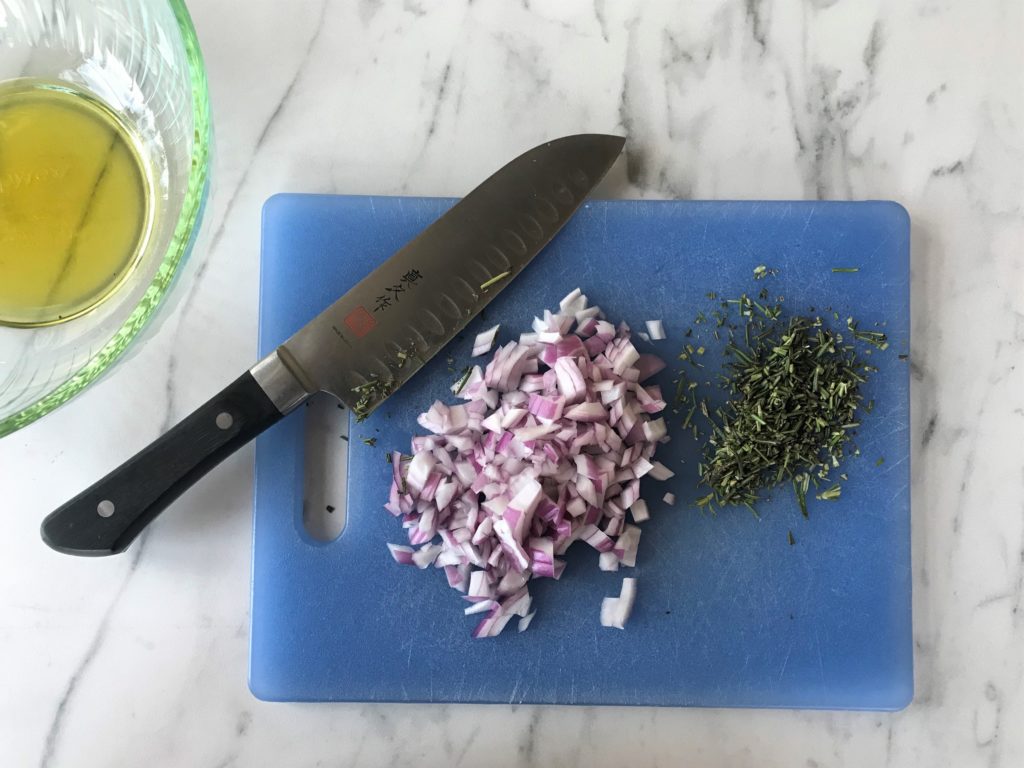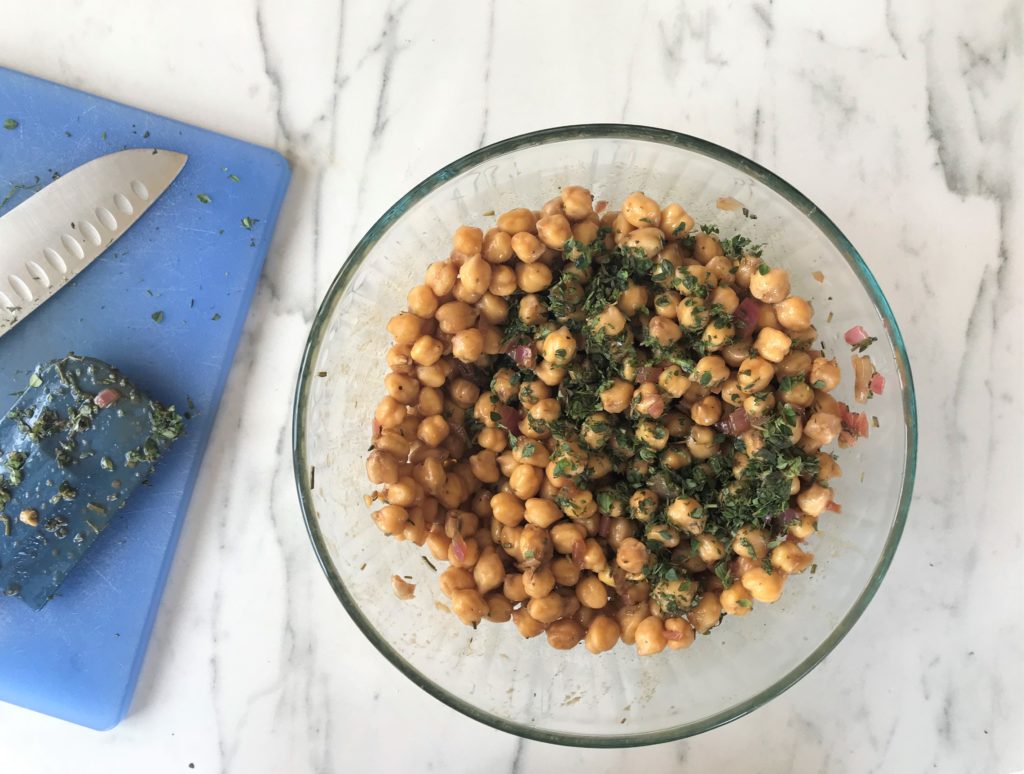A Master Recipe for Marinated Beans
There’s no shortage of inspiration for cooking pulses (beans and lentils) – people have been eating and growing them for some 11,000 years (1). Foundational to cuisines around the world, today they’re as popular as ever as folks focus on plant-powered eating and ways to support sustainable agriculture.
Pulses, dried, edible seeds of legume plants, have a smaller carbon footprint than other protein sources. Many have adapted to grow in drought-prone areas and they “fix” nitrogen due to a symbiotic relationship with bacteria in their roots. They take nitrogen from the air and put it back in the soil, minimizing the need for nitrogen-based fertilizers.
Note: Pulses are crops harvested dry. Leguminous vegetables harvested while green, such as fresh green beans and green peas, are not defined as pulses (1).
Nutrient Powerhouses
Pulses are nutrient powerhouses for just pennies for serving. Call them a “protein food” or call them a “vegetable.” They have protein, iron, zinc and other minerals found in animal foods. And, they have dietary fiber, found only in plants and which most people don’t get enough of, along with B vitamins such as folate and other essential nutrients such as potassium and magnesium. Exact nutrient content varies by type, so bring a rainbow of pulses to your table (3).
Why Are Beans Banned by Some Diets?
People misunderstand and oversimplify carbohydrates – putting them all in the “bad” category. Beans are a “low glycemic” food, they raise blood sugar slower than other foods such as white bread, white rice, and sugary treats. One-half cup of black beans has 20 grams of carbohydrate but much of that is resistant starch which, along with the soluble fiber in beans, resist digestion until they get to the large intestine where they become food for the microbiota or good-for-you organisms. Some of these organisms produce short chain fatty acids, including butyrate, that foster gut integrity and health (4,5).
Bean Rhymes with Lean
Studies show beans help with weight management. Digestion of the protein, resistant starches and fiber in beans cause a slow, steady rise in blood sugar, promoting a feeling of fullness or satiety (6,7).
A Diabetes Superfood
The American Diabetes Association calls beans a superfood because they are so nutrient-rich (8).
Two Types of Fiber
The soluble fiber in beans has another role in cardiovascular health. It mops up “bad” or LDL cholesterol to usher it out of the body. A second type of fiber in beans, insoluble fiber, evades digestion but serves as a bulking agent and keeps your digestive system moving smoothly (3,4,9).
Beans for Brains
Diets that include beans are associated with cognitive health and longevity. The MIND diet, designed to protect against Alzheimer’s and cognitive decline, recommends 4 (1/2-cup) serving of beans a week (10).
The “Antinutrient” Lectin
Lectins in beans (and grains) are also misunderstood. Lectins are proteins bound to carbohydrates that may interfere with nutrient absorption and bind to cells in the digestive tract causing inflammatory issues. On the flip side, lectins have positive antioxidant and blood sugar stabilizing properties. Lectins are water soluble so soaking, cooking and sprouting beans (and grains) eliminates most of these lectins, and some are deactivated by enzymes during digestion. Simply avoid eating raw beans and grains, and, if you slow cook them, make sure they boil for a few minutes (11).
Not for Everyone’s Body
Some people with inflammatory bowel conditions or irritable bowel syndrome have problems digesting some or all types of beans. If that is you, consult with a registered dietitian-nutritionist for help planning a personalized, deliciously balanced diet – with or without beans.
Turn Down the Music
Carbon dioxide gas is a by-product of feeding the friendly organisms in your large intestine with digestion-resistant oligosaccharides. Minimize the effect by soaking and draining the beans prior to cooking (drain and rinse canned beans) to wash away some of these starches. Other strategies I have heard about but not tried are to add vinegar or a little baking soda to the soaking water (12,13) or add kombu or epazote to the cooking water.
Another approach is to take it slow. Start with couple of tablespoons of beans a day and work up to larger servings (13).
In the summer, my go-two strategy to eat beans frequently is to keep a bowl of marinated beans in the refrigerator for salads, wraps and snacks. I load them up with fresh summer herbs from my garden. The master recipe is easy to remember: Use a 1-1 ratio of vinegar to oil, then add onion, herbs and more. Ideas for varying the recipe are below. Tame sharp-tasting onion and garlic if you like by cooking briefly in a little oil.

Master Recipe for Marinated Beans
¼ cup finely chopped red onion, shallot or white part of green onion
1 small clove garlic, minced (optional)
¼ cup wine, balsamic, sherry or other vinegar, or citrus juice
½ teaspoon kosher salt, more to taste
¼ cup extra virgin olive oil, avocado oil or other vegetable oil, divided use
2 cups cooked beans or lentils
3 tablespoons or more chopped fresh herbs (1 tsp dried)
Optional: thinly sliced chives or green part of green onion, chopped parsley, cilantro, bell pepper, carrot or other vegetables

- In a bowl, combine onion, garlic, (see* below) vinegar and salt. Stir to dissolve salt. Stir in olive oil. Add beans, herbs and optional ingredients. Cover and chill until ready to serve.
- Add to salads, wraps or spoon onto a cracker or a leaf of lettuce for a snack.

*For a milder onion and garlic flavor, cook briefly in oil: Combine onion, 1 tablespoon of the oil and garlic in a microwave safe bowl. Micro-cook on high for 30 seconds or a little longer, just to soften the onion. Proceed with recipe.
Makes about 2 cups.
Mexican-Style: Try black beans or lentils, kidney or pinto beans. For vinegar, use 2 tablespoons each: red wine and balsamic vinegars or use lime juice. Add ½ teaspoon ground chili powder (try half ancho and half chipotle), ½ teaspoon ground cumin along with salt. For the herb, use fresh chopped oregano. Add fresh or pickled jalapeno for spark, and chopped bell pepper, jicama or carrot for crunch.
Italian: Try garbanzo beans (chickpeas) or cannellini beans, balsamic, red or white wine vinegar, rosemary or other Italian herbs. Add crushed red pepper or diced pepperoncini for heat. Add mini mozzarella balls – bocconcini or ciliegene to serve.
Middle Eastern: Try garbanzo beans or lentils. Use lemon juice instead of vinegar, if desired. Season with Za’atar, Urfa Biber or Aleppo pepper. Add ground sumac for more tang.
French: Try French green lentilles du Puy or small white beans: Use white wine or champagne vinegar, a dollop of Dijon mustard, chopped tarragon or thyme and parsley or herbs de Provence.
Greek: Use lemon juice or white wine vinegar with white beans or Greek gigantes, dill, oregano or mint. Add diced bell peppers and finish with crumbled feta.
Asian: Try soybeans, adzuki or mung beans. Use rice wine vinegar, honey, grated fresh ginger, a dab of miso and soy sauce in your dressing. For oil, use peanut, avocado or canola.
References
One (1): What Are Pulses? Pulses.org.
Two (2): The Ultimate Guide to Pulse Flours. EA Stewart, MBA, RDN. Today’s Dietitian. May, 2020. 35-37.
Three (3): The Bean Institute. Nutrition Overview.
Four (4): Ask the Expert: Legumes and Resistant Starch – The expert: Dr. Guy Crosby. The Bean Institute
Five (5): What is resistant starch? Jon Johnson; medically reviewed by Katherine Marengo LDN, R.D. November 22, 2019
Six (6): Bean Nutrition and Health Benefits. The Bean Institute.
Seven (7): Eating legumes may aid in weight loss. Shereen Lehman. Reuters.com Health News. April 8, 2016.
Eight (8): Diabetes Superfoods. Diabetes.org.
Nine (9): A Soluble Fiber Primer — Plus the Top Five Foods That Can Lower LDL Cholesterol. Judith C. Thalheimer, RD, LDN. Today’s Dietitian. Vol. 15 No. 12 P. 16. December 2013.
Ten (10)L The Mind Diet. Maggie Moon, MS, RDN. Ulysses Press. 2016. p. 65-67, 278.
Eleven (11): Lectins. The Nutrition Source. Harvard.edu.
Twelve (12): Beans and Grains: The Perfect Pairing. Densie Webb, PhD, RD. Today’s Dietitian. Vol. 26 No. 12 P. 36 December.2014.
Thirteen (13): Beans, Beans, the Magical “Fruit”: The More You Eat the Less You Toot! The Bean Institute.
© 2020 Lorelle Del Matto

 About lorelle
About lorelle
This was so interesting and beautifully presented with colorful
Photos that looked like art!
Like your sense of humor too,… turn down the music
Great advice as well
You have inspired me to get those lonely bean containers out; I often pass them by thinking “too much effort.”
Thank you for all of this … especially during this Pandemic
Crazy for cooking too
Your friend C